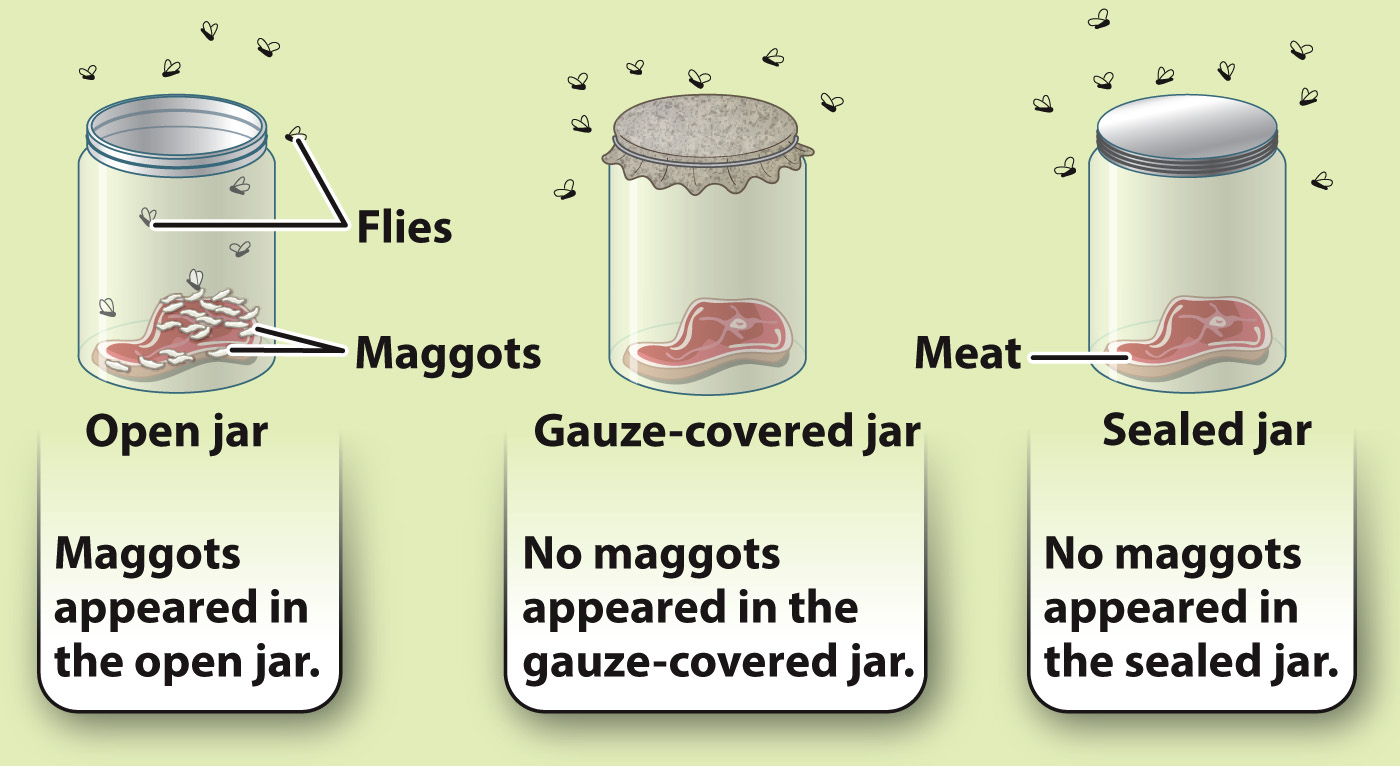The scientific method shows that living organisms come from other living organisms.
Life is made up of chemical components that also occur in the nonliving environment and obey the same laws of chemistry and physics. Can life spontaneously arise from these nonliving materials? We all know that living organisms come from other living organisms, but it is worth asking how we know this. Direct observation can be misleading here. For example, raw meat, if left out on a plate, will rot and become infested with maggots (fly larvae). It might seem as though the maggots appear spontaneously. In fact, the question of where maggots come from was a matter of vigorous debate for centuries, until application of the scientific method settled the issue. In the 1600s, the Italian physician and naturalist Francesco Redi hypothesized that maggots (and hence flies) in rotting meat come only from other flies that laid their eggs in the meat.
To test his hypothesis, Redi set up an experiment in which he placed meat in three glass jars (Fig. 1.8). One jar was left open, a second was covered with gauze, and the third was sealed with a cap. The jars were left in a room with flies. Note that in this experiment, the three jars were subject to the same conditions—
HOW DO WE KNOW?
FIG. 1.8
Can living organisms arise from nonliving matter?
BACKGROUND Until the 1600s, many people believed that rotting meat spontaneously generates maggots (fly larvae).
HYPOTHESIS Francesco Redi hypothesized that maggots come only from flies and are not spontaneously generated.
EXPERIMENT Redi used three jars containing meat. One jar was left open; one was covered with gauze; one was sealed with a cap.
RESULTS

CONCLUSION The presence of maggots in the open jar and the absence of maggots in the gauze-
FOLLOW-
Redi demonstrated that living organisms come from other organisms, but some argued that his conclusion might apply only to larger organisms—
HOW DO WE KNOW?
FIG. 1.9
Can microscopic life arise from nonliving matter?
BACKGROUND Educated people in Pasteur’s time knew that microbes grow well in nutrient-
HYPOTHESIS Pasteur hypothesized that if microbes were generated spontaneously from nonliving matter, they should reappear in sterilized broth without the addition of microbes.
EXPERIMENT Pasteur used two flasks, one with a straight neck and one with a swan neck. The straight-
RESULTS

CONCLUSION The presence of microbes in the straight-
DISCUSSION Redi’s and Pasteur’s research illustrate classic attributes of well-
Pasteur filled two glass flasks with broth that had first been sterilized over heat—
Redi’s and Pasteur’s experiments demonstrated that living organisms come from other living organisms and are not generated spontaneously from chemical components. But this raises the question of how life arose in the first place. If life comes from life, where did the first living organisms come from? Although today all organisms are produced by parental organisms, early in Earth’s history this was not the case. Scientists hypothesize that life initially emerged from chemical compounds about 4 billion years ago. That is, chemical systems capable of evolution arose from chemical reactions that took place on the early Earth. We’ll return to the great question of life’s origin in Case 1: The First Cell and in Chapters 2 through 8.